With Limor Fried 1-16-13 | By Brad Hines
If you have yet to hear of her, Limor Fried- sometimes known as "Ladyada"- is the 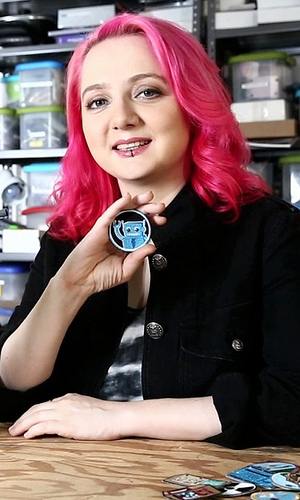 founder of Adafruit Industries in NYC, a small but impactive electronics hobbyist startup at the head of the Maker Movement. With a background in both electrical engineering and computer science, she has a masters from MIT. She is often described as an engineer/artist/hacker—"hacker" in the benevolent connotation of the word.
Adafruit, which she runs on a day to day basis, offers do-it-yourself products that are sold in kits typically to be assembled at home. Her most noteable design and product to date is the aptly named Minty Boost, an Altoids container and some hardware that can be turned into a cell phone charger. All these kits include open source licensing allowing for free reign to modify the product however one wants, including to offer for sale. What has happened since is rather surprising, as this seemingly counter intuitive approach of not protecting a design's intellectual property has propelled Adafruit-with Fried at the top-to on its way to becoming a household name thinks this writer. Adafruit, after all, is more than just an electronics biz-it's an online educational and collaborative hub. I spoke with Fried about just that, and as well-her recent notoriety, the future of Adafruit, and the Industry itself.
founder of Adafruit Industries in NYC, a small but impactive electronics hobbyist startup at the head of the Maker Movement. With a background in both electrical engineering and computer science, she has a masters from MIT. She is often described as an engineer/artist/hacker—"hacker" in the benevolent connotation of the word.
Adafruit, which she runs on a day to day basis, offers do-it-yourself products that are sold in kits typically to be assembled at home. Her most noteable design and product to date is the aptly named Minty Boost, an Altoids container and some hardware that can be turned into a cell phone charger. All these kits include open source licensing allowing for free reign to modify the product however one wants, including to offer for sale. What has happened since is rather surprising, as this seemingly counter intuitive approach of not protecting a design's intellectual property has propelled Adafruit-with Fried at the top-to on its way to becoming a household name thinks this writer. Adafruit, after all, is more than just an electronics biz-it's an online educational and collaborative hub. I spoke with Fried about just that, and as well-her recent notoriety, the future of Adafruit, and the Industry itself.
BH: What was the impetus behind creating Adafruit?
LF: Adafruit was built on the idea you can be a great cause and a great business. So from the start, we've given away the "recipe" of how to make things; from the actual files, to publishing code on how our open-source shopping cart system works and back. We've found that the more you give, the more you get back. Our customers and community have a lot of choices where they can get electronics-and-more, but they choose Adafruit because they know they're part of something more than a mere sale of physical goods. Because we've put value in, we do get a lot of value back.
BH: What is the most rewarding aspect of what you do?
LF: Putting value back and seeing others make and share. Open-source is something customers and smart communities seek out. There are a lot of places to get electronics online, but our community likes to support companies that provide tutorials, like tons of open-source code on GitHub and putting value back. If you're in the electronics arena, customers want to be able to make improvements and suggestions to companies; it's a requirement for the modern DIY/maker movement.
The best thing of course is when a parent e-mails us or tells us in person that their daughter wants to be an engineer after exploring the Adafruit site or building one of our kits.
BH: Adafruit seems to pretty much be pivotal in the DIY movement, would you agree with this, and if so how do you think this came about?
Fried with her Robotics Badge
LF: Thank you, there are a few of us who have been doing this for a while, it's been a group effort. There are many great leaders in the Maker movement, I think Bunnie Huang is one of the pioneers and heroes we should all celebrate - he's been an inspiration and pioneer for all of us. I've been doing open-source hardware for almost 10 years now, my company, Adafruit has a goal of education, sharing and showing that open-source hardware is also a great business.
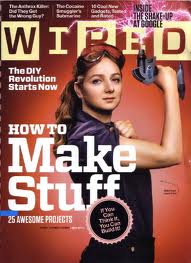 BH: Has your recent notoriety-WIRED magazine cover, Entrepreneur Magazine's "Entrepreneur of the Year", etc.- changed anything about how you go about business?
BH: Has your recent notoriety-WIRED magazine cover, Entrepreneur Magazine's "Entrepreneur of the Year", etc.- changed anything about how you go about business?
LF: After the WIRED cover and the Entrepreneur of the year award, it's made some things easier and some things more of a challenge. It's easier to explain what Adafruit does and send links to articles about us as we meet new partners, staff and companies that share our vision and values. The challenge is, press makes more press and requests for travel, speaking and more. We'd love to be able to attend every event and speak at every conference, but we're still a small dedicated team so we need to politely decline on too much travel. The benefit is that we can suggest many other makers who should be celebrated and in the spot light!
©WIRED Magazine
BH: What do you think brought about the DIY movement?
| "My favorite thing is the thing I've yet to design and release, I try to think about what needs to be done and not what's been done." |
LF: The DIY movement has always been happening, it just became more visible and exciting to more people as the possibilities increased. Right now for a small amount of time and resources, anyone can make almost anything that they have an idea for. There's never been a better time to start making, and spread the word here we are.
BH: Name what you would say are the biggest devices behind the DIY movement.
LF: It's a challenge to say which specific "devices" were behind the DIY movement, but here are some I think matter and why: Arduino, the open-source physical computing platform that takes your ideas and makes them real. It glues together software and hardware in an easy way, with tons of resources to make real things.
Next up MakerBot, a low-cost approachable 3D printer for everyone. MakerBot opened the floodgates of low-cost 3D printers, every day there's a new one - if anyone wants to 3D print, there's something for them at many price points and features.
Open-source hardware, this is more general, but there are many companies, from Adafruit to Sparkfun that have release hundreds of open-source hardware products. From breakout boards to watch kits - we're all putting value back in while we do a great job getting our customers and communities awesome products. We really like Evil Mad Scientist, LittleBits, Wayne and Layne, Seeed, Bunnie studios and many many more who have devoted their passions to sharing hardware.
Lastly, a very specific one, the TV-B-Gone kit. Mitch Altman and I worked together on this kit, it's an open-source hardware version of his assembled product. This kit allowed Mitch to travel the world and do soldering workshops where he spread the word of learning, sharing and hackerspaces, and later founded Noisebridge. Noisebridge is one of the oldest and best hackerspaces in the USA. All of this was (and is) a big part of the Maker movement.
BH: What is your favorite thing you have created?
LF: My favorite thing is the thing I've yet to design and release, I try to think about what needs to be done and not what's been done.
BH: How do you see Adafruit in the future, especially regarding Maker movement?
LF: I see the future of Adafruit as a place for educational electronics for everyone; and evolving education for everyone. Being able to share files and designs was just the start; now we all need to work hard to help inspire and educate the next generation of scientists, designers, and engineers. The Maker movement, and Adafruit, to me have the same destination - maximizing the human potential through the sharing of information.
Some Sponsored Products Related to DIY/Maker movement:
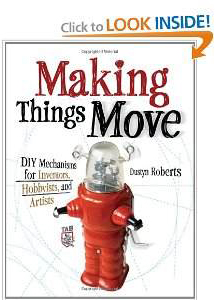 |
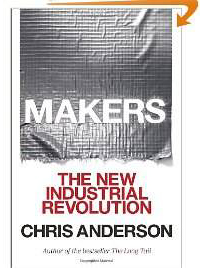 |
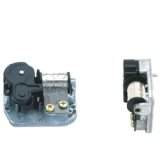 |
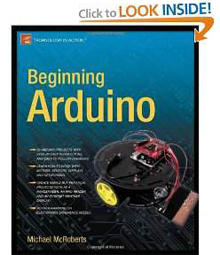 |
| Making Things Move |
Makers-The New Industrial Revolution |
18 music movement for DIY projects |
Arduino for Beginners |